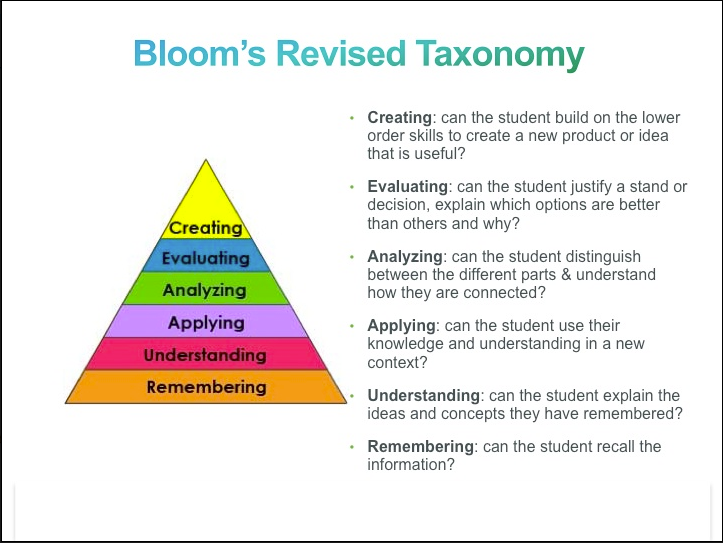Learning Outcomes and Uploading Syllabi
As part of both ABET and MiddleStates Accreditation reviews, the university and the college are asking that you add learning outcomes to your syllabi and that you upload syllabi for your fall 2019 and spring 2020 courses to the Class Roster.
Learning Outcomes describe what you expect students to be able to do by the end of the course. They are not just what is covered in the course, but rather what students should be able to demonstrate or accomplish based on the instruction they received. Thus learning outcomes normally include action verbs like solve, analyze, select and justify, design, …… See the link below or the MTEI website for a list of action verbs that match various levels of Bloom’s taxonomy. Learning outcomes should be specific and measurable. The action verbs typically inform how one might measure the student’s ability to meet the learning outcome. At the course level, there are typically 3-5 Learning Outcomes that cover much of the content of the course. If you need help thinking about and writing learning outcomes, MTEI will have a Teaching Topics Lunch Discussion on Learning Outcomes on Wednesday, Oct. 16th at noon followed by office hours in Rhodes 195 (please RSVP to klc78 for lunch count), or you can make an appointment with Kathy Dimiduk.
To upload your syllabus, go to classes.cornell.edu and select the correct semester. Then select Syllabi in the upper right-hand corner and attach the appropriate syllabus to each course.
Various groups have generated good lists of Action Verbs corresponding to the different levels of Bloom’s taxonomy. This particular list has many verbs that work well for engineering courses. http://www.northeastern.edu/nuolirc/wp-content/uploads/2018/01/Blooms-Taxonomy-Handout.pdf


